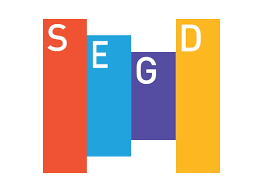ARCHIVE: Category Archive for: Others
Crossing The MBTA’s Newest “T”
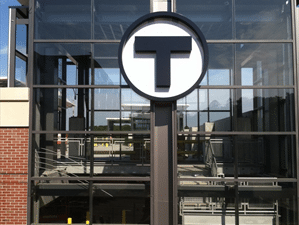
Our Metro Sign and Awning install crew has been working diligently this week with Suffolk Construction at The Beverly Depot. We’ve almost finished installing the new “T” Logo and the facility’s way-finding signs. Thanks for the opportunity to service another MBTA and Suffolk Project; we appreciate your valued partnership. The new parking facility at the Beverly station is slated to open for public use on Saturday, August 3rd, 2014. It will take another couple of months to finish a similar facility at the Salem station, probably not opening until October according to the Salem News. Together, the two new garages will allow commuters to park more than 1,200 vehicles, which will greatly ease the current parking crunch in those locations.
How Many Kinds of Signs Can You Name?
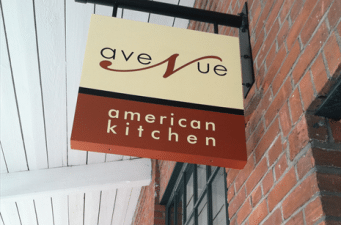
How Many Kinds of Signs Can You Name? There are more than 206 bones in the human body, each one with its own name, from cranial bones to vertebrae, and from the vomer to the clavicle. That’s more bones than types of signage, but our industry nevertheless can marshal quite a line-up of different ways to convey messages to people. How many different types of signs can you name? Below are some photos, with a link that lets you see what that type of sign is called. Sign Type 1: This high-profile sign is the kind you’ll see outside many developments, such as shopping centers, highway service establishments, or multi-tenant commercial parks. Depending on circumstances and visual
Convert Your Existing Signs to LED Technology – Part 2
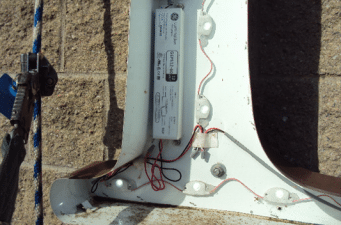
Convert Your Existing Signs to LED Technology – Part 2 Last time, we discussed some of the benefits that make LED illumination such a great option for signage, much better than the neon or fluorescent tubes currently in use in so many existing signs. This time, let’s assume you’ve been convinced to consider a switch to LEDs. Here’s what’s involved in making the changeover: Simple Conversion Process The first step is to see what you’ve got right now. Our crew comes to your location(s) and inspects your current signage. We’re interested not only in the design, but the physical sizes and shapes where illumination is required. We not only measure each linear run of lighting, but we also look at
Inside Metro Signs – Corey Fisher, Partner, V.P. Operations

With a degree in Mechanical Engineering from Worcester Polytechnic Institute (WPI), Corey Fisher is a man who knows how to make things. He enjoys the challenges that come with the signage industry and takes pride in the products he helps create. Corey first started with Metro Sign and Awning about 10 years ago as a technician, a role which soon developed into an estimating position. About a year later, an opportunity arose for Corey to join in partnership with the existing owners: Brian Chipman and Tom Dunn. “Throughout school, I was always interested in CAD design and CNC machining, which just so happens to have many applications within the signage industry today,” says Corey, “so I asked Brian and Tom
Working With General Contractors – Our Safety Program
It’s a little bit too technical for the kind of blog this is primarily intended to be, but for a long time we have wanted to write up something about the extensive efforts we make to keep ourselves qualified for work with General Contractors. As you may know, GCs on major construction projects are subject to a wide range of standards and specifications that control not only how they operate, but how the subcontractors they hire (that would be us!) must also operate. If we don’t conform to their high standards, GCs simply cannot trust us with any work. So we here at Metro Sign and Awning spend a considerable amount of time, effort, and resources making sure we’re qualified
Helping You Find Your Way Around
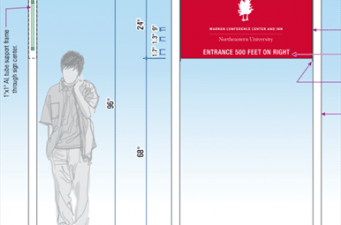
If you’d watched us work for the past couple of weeks, you might’ve thought we were going around in circles. And in a way, you’d be right. We’ve been working on another large wayfinding signage project, and the number of details outnumber the number of signs by about a thousandfold. We’re not complaining, or bragging – that’s just the way wayfinding projects (and most others, really) seem to go. If you’d like to see a few of the details and understand some of the principles behind a wayfinding signage project, the AIA (American Institute of Architects) created an overview document a few years ago, which is now freely available. If you have questions about wayfinding signage or would like to
Inside Metro Signs – Jamie Potvin, Designer

For Jamie Potvin, the process starts when information about a new project begins to trickle in through one of the sales team members. Over the next days and weeks, she steeps herself in the client’s history and strategy, various signage suggestions, client and team requests, and specific requirements, as well as any graphic elements such as client logos that are already available. She also likes to look at comparable signage of the same size and classifications that’s already “out there” in the community. Then she dives into the design process. With more than fifteen years of experience, Jamie likes to start a project by working on some “looks”: rough sketches and simplified renderings of the new sign’s essentials. She’s usually
Carved and Routed Signs

In sign-making, as in so much of daily life, what’s old is often new again. Sign-making dates back to very early civilizations. For example, carvings were heavily used to communicate information by the Mayans, and also by the Greeks and the Romans. Pompeii and Herculaneum, two Roman cities buried by volcanic ash and lava in 79 AD and therefore helpfully preserved for us to study today, contain hundreds of carved signs (some gilded, others painted) advising residents of then-important information. The traditional art of Whakairo, or carving in wood, stone, and bone, has been a staple of the Maori culture in New Zealand since the first Polynesians arrived there more than 1,000 years ago. During those early days, sign-makers learned
Five Things You Don’t Know About Wayfinding Signs

“Wayfinding” is a fascinating word that conveys its own meaning very clearly – which is precisely what you expect from “wayfinding signs” themselves. But it’s far from easy to create a series of signs that are unified, logical, and authoritative in design, yet variable enough to convey highly specific information clearly and unambiguously to people who are quite often in a hurry, stressed, confused, and possibly lacking in local language skills. So it’s no surprise that, to many designers, wayfinding signage projects are among the most challenging tasks in all of signmaking, and – when satisfactorily accomplished – among the most rewarding. Here are some interesting facts you probably don’t know about wayfinding signage: Wayfinding Signage Should Go Beyond
Getting More From the Business Sign ROI Calculator
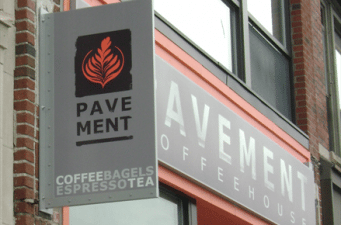
Signs cost money. So before you commit your business to getting a new or updated sign, it’s natural and prudent to ask whether the expenditure will be a worthwhile one. Fortunately, you can get the answer from our unique and exclusive Business Sign R.O.I. Calculator. But like any computerized tool, the answer you get out of it is only as accurate as the information you put into it. To make the Calculator easier and faster for most business owners and managers to use, we’ve built it with some generic information already in place. These data include a generic estimate of the costs involved – including the necessary Permits and approvals, average figures for electricity usage and costs, the typical traffic
Categories
- ADA
- Architectural Signage
- Awnings and Canopies
- Branding
- Colleges and Universities
- Community
- COVID-19
- Curated Content
- Customer Spotlight
- Customers
- Deep
- Design/Build
- Digest
- Digital Signage
- Eco-Signage
- Electronic Message Centers (EMC)
- Enclosures
- Exterior Signage
- Fabrication
- Freestanding Signs
- Fun
- Functional Signage
- Green
- How Much Does a Sign Cost
- Industries
- Inside Metro
- Interior Signage
- Legacy
- Legacy-EA 2.0
- Metro Sign
- Metro Sign & Awning
- New England Signs
- Newsletters
- Original Posts
- Others
- Partners-Developers-Contractors
- Professional Signage Installation
- Publications
- Residential Signage
- Sign Design
- Sign Renovation
- Sign Types
- Sign Warranty
- Signage Regulations
- Signage ROI
- Signage Tips
- Vehicle Wrap
- Wayfinding
- Window and Door Graphics
Recent Posts
Tags
Copyright 2022 MetroSign and Awning, All rights reserved | Privacy Statement | Terms of Use
